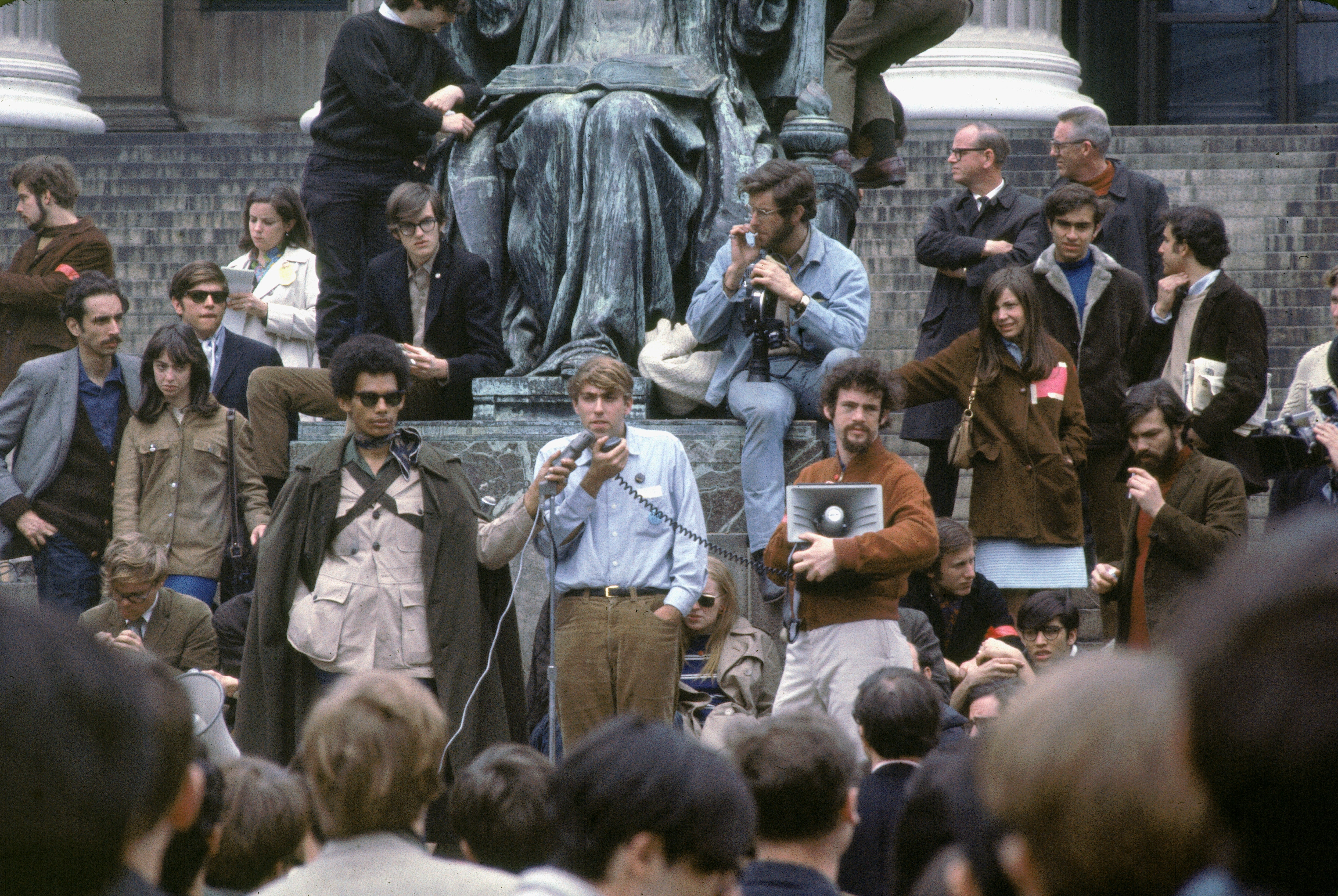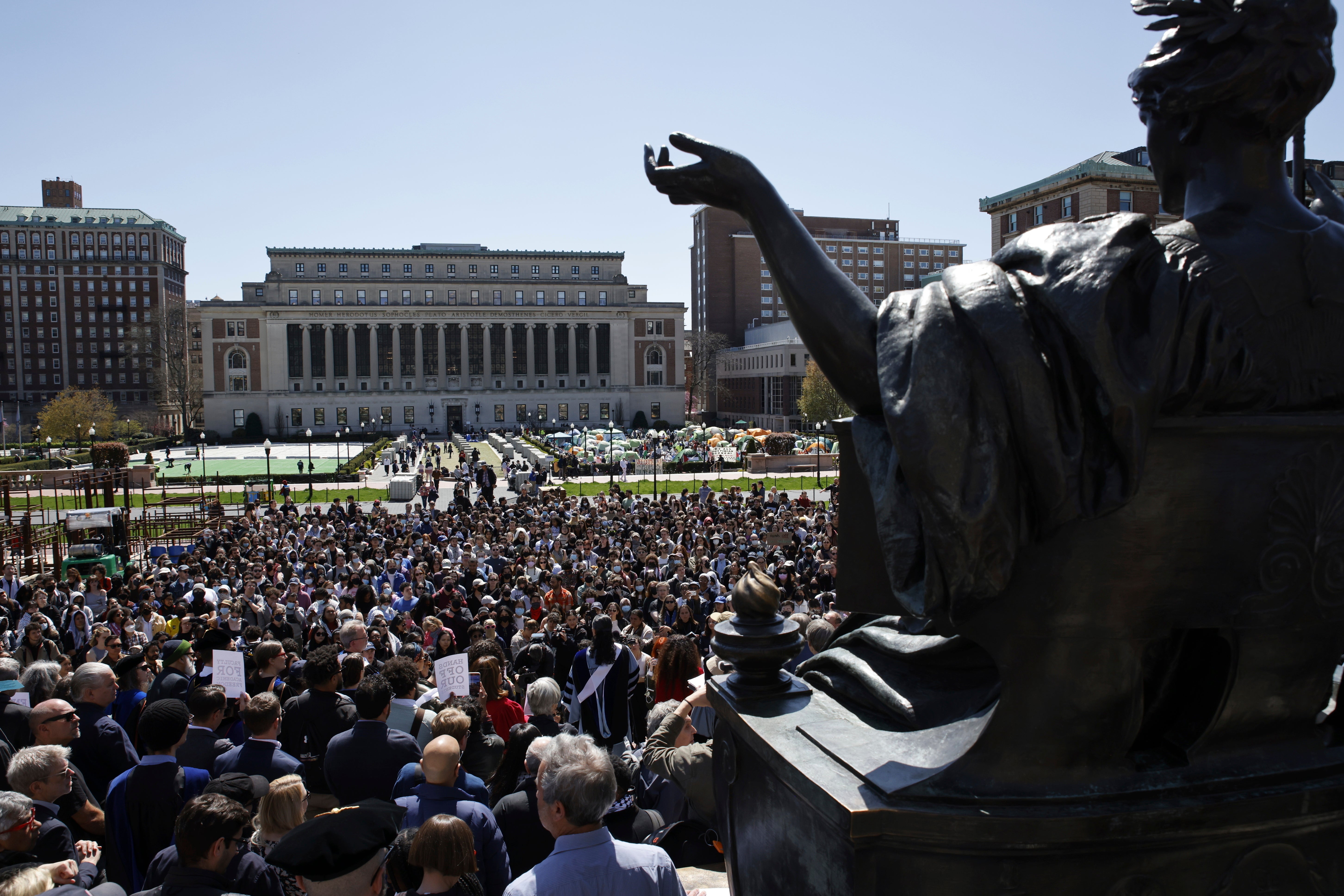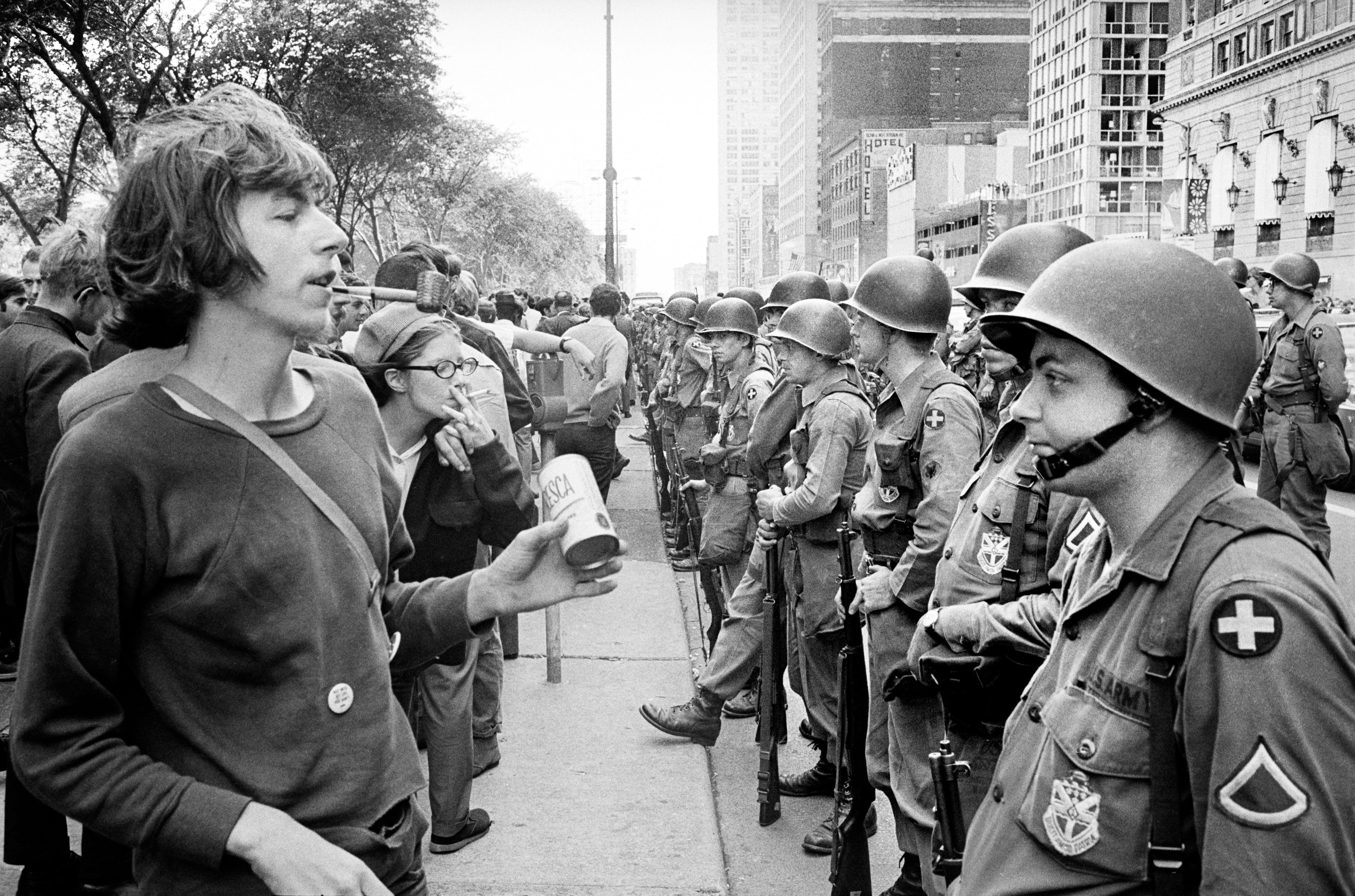Gen Z sees the Gaza protests as their 1968 moment: ‘We built this on their legacy’
An anti-war movement is spreading on college campuses across America and beyond. Protests have been met with police violence, mass arrests and an unbending political class – all of which have only fuelled the demonstrations further. A hot summer of protest looms, and the stage is set for a showdown at the Democratic National Convention in Chicago, writes Richard Hall

Your support helps us to tell the story
From reproductive rights to climate change to Big Tech, The Independent is on the ground when the story is developing. Whether it's investigating the financials of Elon Musk's pro-Trump PAC or producing our latest documentary, 'The A Word', which shines a light on the American women fighting for reproductive rights, we know how important it is to parse out the facts from the messaging.
At such a critical moment in US history, we need reporters on the ground. Your donation allows us to keep sending journalists to speak to both sides of the story.
The Independent is trusted by Americans across the entire political spectrum. And unlike many other quality news outlets, we choose not to lock Americans out of our reporting and analysis with paywalls. We believe quality journalism should be available to everyone, paid for by those who can afford it.
Your support makes all the difference.Historical comparisons between the mass protests of 1968 and today’s student demonstrations in solidarity with Gaza are both imperfect and hard to avoid.
It’s been just 10 days since Columbia University students pitched the first tent on the campus lawns, and already the protests have galvanised a generation of college students much in the same way the Vietnam war did 56 years ago – spreading from coast to coast.
It is not just the scale of the protests that have drawn comparisons, but the tactics. That is no accident: the protesters say they studied that generation-defining movement methodically before launching their own.
“We were only able to do this because the student organisers went into the archives of ’68 and learned from what the older generation wrote about their experiences. A lot of organisers spent time and looked at how they did everything,” Majd, a Columbia undergrad who asked for their full name not to be published, told The Independent at the protest camp on Friday.
“We completely built this on their legacy,” Majd added.
While planning for their encampment, the Columbia protest organisers learned about how the 1968 protesters dealt with security and how they navigated communications. Later, they invited several participants of the historic protests to visit the encampment and speak.

“Even the idea of a solidarity camp at Columbia was based on the 1968 anti-Vietnam war protests,” said Ava Lyon-Sereno, a Columbia student and protester. “It really feels like we’re continuing a tradition.”
Student protests over the war in Gaza have been common across college campuses since the war broke out in October, following a surprise Hamas attack that killed 1,200 in Israel. The resulting conflict has killed more than 34,000 Palestinians, most of them women and children, and aid blockages have resulted in famine conditions in northern Gaza, creating a humanitarian disaster. Hundreds of schools, and all of Gaza’s 12 universities, have been damaged or destroyed since the Israeli attacks began.
The Columbia protesters of today may seem tame compared to their historical forebears. During the Vietnam war protests, a dean was briefly taken hostage and five buildings were seized. Then, as today, Columbia’s president called in police to break up the protests. Around 1,000 officers flooded onto campus, some on horseback, and made 700 arrests.
Despite a media campaign to tarnish the camp as dangerous radicals, the students of Columbia today are hyper-focused and strategic – their primary aim is to convince the university to cut ties with Israeli academic institutions and divest from Israel-linked companies in protest over the war. Organisers hosted de-escalation training and media training for the protesters. There are encampment monitors in yellow clearly-marked jackets to handle the press. The encampment even has a designated “nut zone” to protect students with allergies.
Students in the 1960s were horrified by the filtered and selective images of Vietnam that appeared on their television screens, while Generation Z now wakes up every morning to videos of death inches from their faces. If Vietnam was America’s first television war, Gaza may be the first time many young Americans have so intensely consumed a live-streamed war. They read headlines and see images every day about the horrors caused by US weapons and are asked to be silent and study.
“You know, when I wake up in the morning and see a video of a parent carrying bits of their child in a plastic bag, that should not be normal, that should not be acceptable,” said Lyon-Sereno.
Changes in technology have made the protesters’ mission even harder today than in 1968, too.
“It’s a whole new terrain now,” said Aidan Pari, a protester and student at Columbia. “We have digital security that we need to look at – people trying to take pictures of people’s faces and dox them online. We have face detection software in the cameras at Columbia and the next morning you wake up and you’re suspended.”
“But we can use what they did in ’68 as building blocks,” Pari said.
Many of the Columbia students wonder if their movement would have grown so fast if it had not been for the rash decisions of their university’s leaders. When the Columbia administration ordered police to break up the budding protest camp last week, leading to the arrests of more than 100 students, it had the opposite of the intended effect. Gaza solidarity protests have spread like wildfire to dozens of campuses across the country in the past week – at Yale, NYU, Ohio State University, Stanford University, Emory University, and Berkeley, to name a few – leading to a violent crackdown by police and the arrest of hundreds of students. The movement has even spread beyond the borders of the US to Paris, Sydney and Cairo.

In 1968, too, protests spread across the world – most consequently in Paris, where student protesters linked up with millions of striking workers and threatened to overthrow the government.
The students in Columbia have no such ambition, but this is an election year, and young voters are a crucial part of the coalition that US president Joe Biden needs to win in November.
Majd, a Columbia student, thinks the chances for Biden to win young voters back are slim.
“We’re in such a difficult situation because you have a genocidal enabler and you have Trump. We don’t need to even get into how bad that is going to be,” they said.
“I feel like this generation – at least people in this camp – understand that we deserve an option that is neither of them.”

The final echo from history looms: As in ’68, the Democratic National Convention (DNC) will be held in Chicago. Then, 10,000 protesters descended on the convention to protest, and a violent police crackdown ensured any messages the Democrats were hoping to convey to the public were overshadowed.
Gaza protesters have promised to do the same again.
“We’ll be marching with or without permits. This DNC is the most important one since 1968, also in Chicago, when Vietnam war protesters and the Black liberation movement organised mass demonstrations that were violently repressed” Hatem Abudayyeh, national chair of the US Palestinian Community Network recently told The Chicago Tribune.
In the tumult of that year, and perhaps because of it, Richard Nixon was elected president.
Today, as Biden’s unconditional support for Israel’s war in Gaza becomes more unpopular by the second, it is Donald Trump who waits in the wings, hoping to capitalise on the chaos.
Join our commenting forum
Join thought-provoking conversations, follow other Independent readers and see their replies
Comments